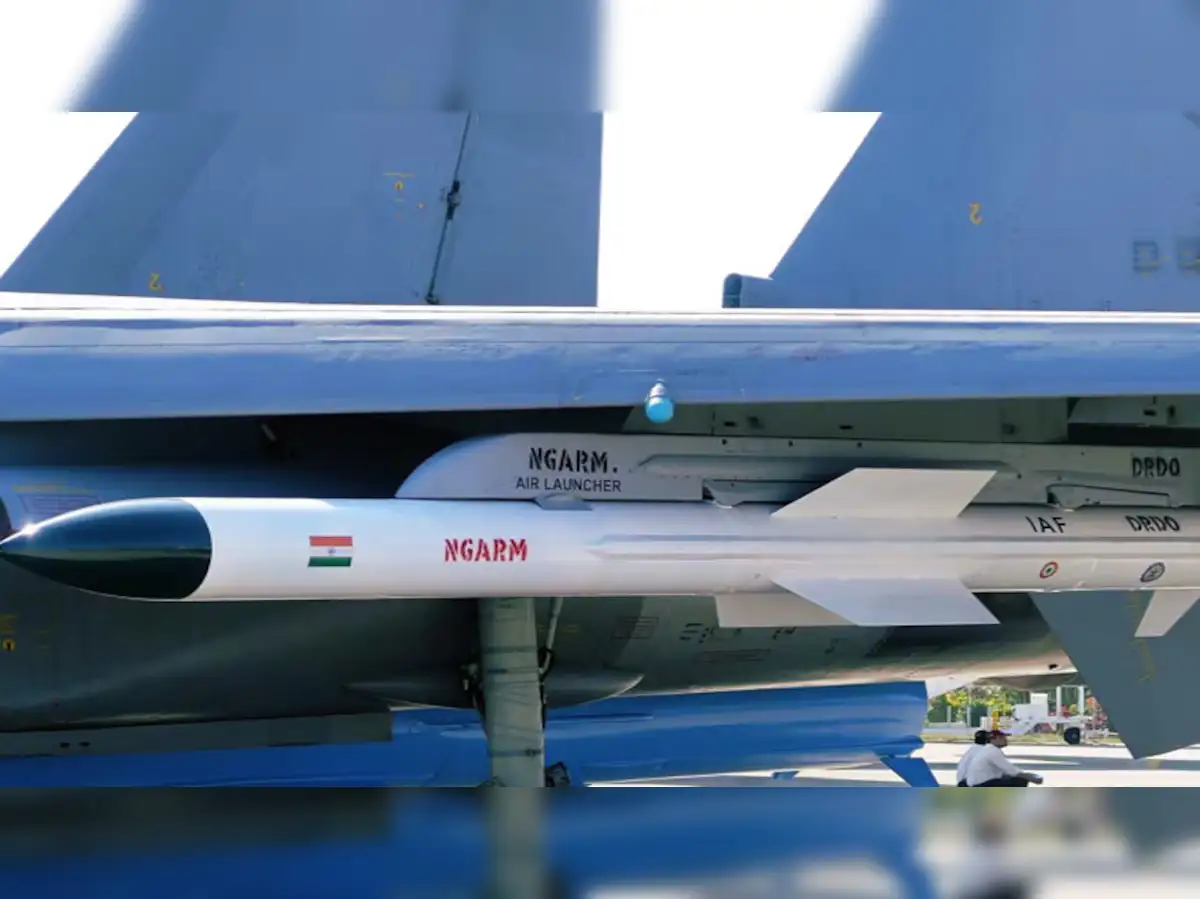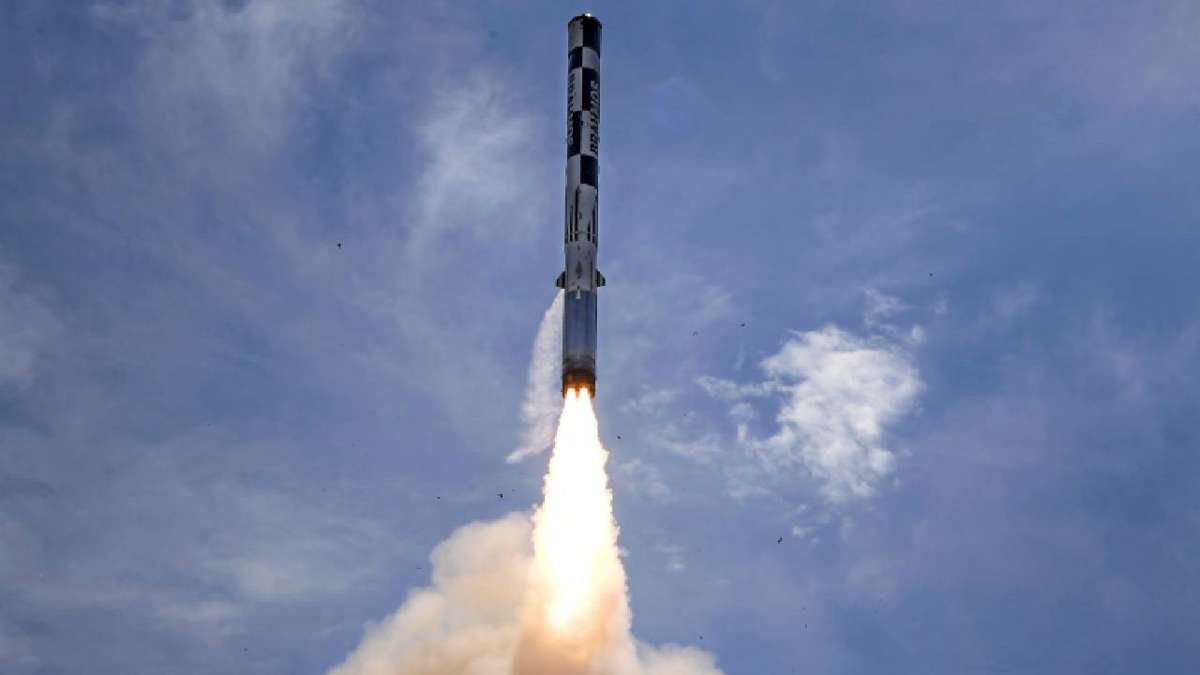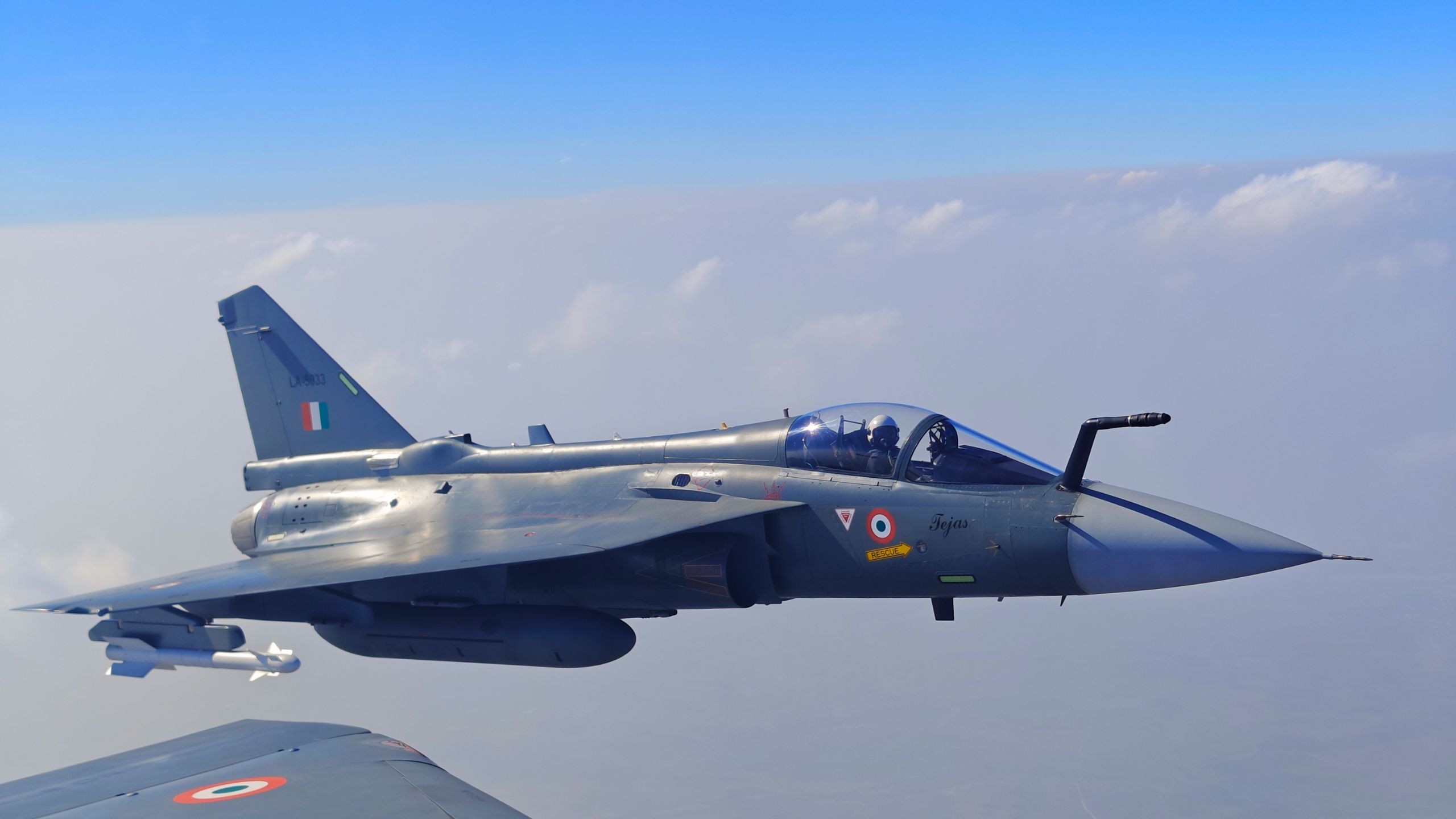News Beat
News Beat reporting is an idrw.org initiative to let our Readers to report News Based on Actual facts but some how has not been reported in Main Stream Media .
SOURCE: RAUNAK KUNDE / NEWS BEAT / IDRW.ORG


The Hellenic Air Force (HAF), Greece’s air arm, is reportedly showing keen interest in India’s Rudram-1 and Rudram-2 series of air-launched anti-radiation missiles (ARMs) for integration with its fleet of Dassault Rafale fighter jets, according to sources cited by idrw.org. Developed by India’s Defence Research and Development Organisation (DRDO), these supersonic and hypersonic missiles are designed for suppression of enemy air defenses (SEAD) and destruction of enemy air defenses (DEAD), targeting radar, communication systems, and bunkers. Concurrently, the Indian Air Force (IAF) is advancing integration of the Rudram-1 with its Rafale and Tejas Mk1A jets, positioning India as a potential supplier of advanced SEAD solutions.
In contrast, European NATO partners, including France and Germany, face gaps in dedicated anti-radar capabilities, relying on the U.S.-made AGM-88 HARM or awaiting the MBDA RJ10 missile, which is not expected until 2035 with the Rafale F5.
Continue readingSOURCE: RAUNAK KUNDE / NEWS BEAT / IDRW.ORG


In a dramatic escalation of tensions between India and Pakistan, the Indian Army released footage on May 12, 2025, purportedly showing the wreckage of a Pakistan Air Force (PAF) Mirage 5 jet shot down during Operation Sindoor. The video, presented during a Director General of Military Operations (DGMO) briefing, was cited as evidence of India’s successful retaliation against Pakistani aggression following a terrorist attack in Kashmir on April 22, 2025, which killed 26 civilians. The footage has sparked intense debate and drawn global attention to the capabilities of both nations’ air forces, with the Mirage 5—a French-designed fighter-bomber capable of nuclear weapons delivery—taking center stage.
The Indian military’s video, widely shared on platforms like X, shows debris scattered across a field, including what appears to be a jet engine, tail fin, and remnants of a weapons. Air Marshal A K Bharti, addressing the briefing, credited India’s indigenous Akash air defense system for downing the Mirage 5, emphasizing that Indian bases remain fully operational with minimal losses.
Continue readingSOURCE: RAUNAK KUNDE / NEWS BEAT / IDRW.ORG


In a significant blow to Pakistan’s air defense capabilities, the Indian Air Force (IAF) has destroyed a Chinese-supplied YLC-8E anti-stealth radar stationed at the Chunian Air Base in central Punjab, identified as a frontline operational station. The radar, developed by the Chinese state-owned China Electronics Technology Group Corporation (CETC) and touted as the “flagship of Chinese stealth radar,” was obliterated during India’s Operation Sindoor, a retaliatory strike launched on May 7, 2025, targeting terrorist infrastructure and military assets in Pakistan.
The YLC-8E, a UHF-band 3D surveillance radar, was donated to Pakistan by China in 2023 from the People’s Liberation Army’s own inventory, reportedly to counter India’s superior ELM-2090U Ultra UHF radars deployed by the IAF. Described by China’s state-owned Global Times as the world’s first UHF-band anti-stealth radar system, the YLC-8E features a massive antenna—equivalent to two badminton courts—and leverages high-power, cutting-edge information processing technology to detect advanced stealth aircraft, including the U.S. F-22 and F-35, at ranges exceeding 500 kilometers. It is also designed to track missile threats up to 700 kilometers, offering high-definition targeting and independent guidance capabilities. The radar’s active phase-controlled array and novel anti-stealth technology were marketed as superior to foreign competitors, positioning it as a backbone of modern air defense networks.
Continue readingSOURCE: RAUNAK KUNDE / NEWS BEAT / IDRW.ORG


India’s Defence Research and Development Organisation (DRDO) displayed its indigenously developed Long Range Land Attack Cruise Missile (LRLACM) at the DEFEA 2025 exhibition in Athens, Greece, drawing significant attention from global defense communities. The subsonic cruise missile, with a strike range of 1,000 km, underscores India’s growing prowess in advanced missile technology and its push toward self-reliance in defense manufacturing.
The LRLACM, a new variant of the Nirbhay missile, was first successfully flight-tested on November 12, 2024, at the Integrated Test Range in Chandipur, Odisha. Developed by the Aeronautical Development Establishment (ADE) in Bengaluru, with contributions from other DRDO labs and Indian industries like Bharat Dynamics Limited and Bharat Electronics Limited, the missile is designed for precision strikes on strategic land targets. Its terrain-hugging flight path and subsonic speed enhance stealth, making it difficult for enemy defenses to detect and intercept.
Continue readingSOURCE: RAUNAK KUNDE / NEWS BEAT / IDRW.ORG


In a strategic move to address its maritime capability gaps, the Indian Navy has initiated government-to-government discussions with the United States and France for the procurement of twin-engine light Naval Utility Helicopters (NUHs). According to sources familiar with the development, the Navy has reached out to the embassies of both nations and engaged with leading manufacturers, including European aerospace giant Airbus, to acquire all-weather, twin-engine NUHs.
The Indian Navy has outlined specific requirements for the helicopters, emphasizing their critical role in enhancing operational flexibility. The NUHs are expected to be in the 5-tonne weight category and equipped with folding blades to enable seamless operations from warships to shore and vice versa. This procurement aligns with the Navy’s long-standing need for 111 such helicopters to strengthen its maritime surveillance, logistics, and search-and-rescue capabilities.
Continue readingSOURCE: RAUNAK KUNDE / NEWS BEAT / IDRW.ORG


In a significant boost to India’s defense manufacturing capabilities, a state-of-the-art production plant for the BrahMos-NG (Next Generation) missile was inaugurated in Lucknow. The facility, designed to produce 150 units of the advanced supersonic cruise missile annually, marks a pivotal step in enhancing the Indian Air Force’s (IAF) precision strike capabilities. The opening comes on the heels of the IAF’s successful deployment of the BrahMos-A missile, which recently delivered devastating precision strikes on Pakistan Air Force (PAF) airbases, showcasing the missile’s formidable power.
The BrahMos-NG, a smaller and lighter variant of its predecessor, weighs just 1.3 tons, making it compatible with all IAF fighter jets, including light combat aircraft. This versatility is expected to significantly expand the IAF’s operational flexibility, enabling a broader range of platforms to carry and deploy the missile. Unlike the heavier BrahMos-A, which is primarily deployed by larger aircraft like the Su-30 MKI, the BrahMos-NG’s compact design ensures it can be integrated across the IAF’s diverse fleet.
Continue readingSOURCE: RAUNAK KUNDE / NEWS BEAT / IDRW.ORG


Amid the ongoing India-Pakistan conflict, Pakistan’s much-touted Turkish unmanned combat aerial vehicles (UCAVs), including the Bayraktar TB2 and Bayraktar Ak?nc?, have been conspicuously absent from the battlefield. A senior Indian Air Force (IAF) official, speaking to the Indian Defence Research Wing (idrw.org), revealed that Pakistan has deliberately kept these systems out of action, likely due to fears of losing them to India’s robust integrated air defense (AD) network. This development underscores the limitations of slow-moving UCAVs like the TB2 in contested airspace, where advanced AD systems dominate.
Pakistan has heavily invested in Turkish UCAVs, acquiring the Bayraktar TB2 and Bayraktar Ak?nc? to bolster its aerial capabilities. The TB2, a medium-altitude long-endurance (MALE) drone, gained international fame for its affordability and effectiveness in conflicts like Nagorno-Karabakh and Libya, where it faced poorly equipped adversaries. The Ak?nc?, a high-altitude long-endurance (HALE) UCAV, boasts a 1,350 kg payload and advanced avionics, positioning it as a strategic asset capable of mimicking fighter jet operations. Pakistan received 6-7 Ak?nc? drones in 2023 and an undisclosed number of TB2s earlier, integrating them into its air defense network for intelligence, surveillance, reconnaissance (ISR), and strike missions.
Continue readingSOURCE: RAUNAK KUNDE / NEWS BEAT / IDRW.ORG


As the India-Pakistan conflict intensifies, unconfirmed reports suggest that India may be fast-tracking the integration of upgraded intelligence systems, stand-off weapons, and Software Defined Radios (SDRs) onto its Tejas Mk1 Initial Operational Capability (IOC) and Full Operational Capability (FOC) variants. This development, driven by the ongoing clashes with Pakistan, aims to bolster the Indian Air Force’s (IAF) operational capabilities amid a rapidly evolving battlefield scenario.
The IAF currently operates 31 Tejas Mk1 aircraft, comprising 16 IOC and 15 FOC variants, inducted into the No. 45 Squadron (“Flying Daggers”) and No. 18 Squadron (“Flying Bullets”) at Sulur Air Force Station. The Tejas Mk1, a lightweight, single-engine, multirole fighter developed by the Aeronautical Development Agency (ADA) and Hindustan Aeronautics Limited (HAL), has been a cornerstone of India’s push for self-reliance in defense manufacturing.
Continue readingSOURCE: RAUNAK KUNDE / NEWS BEAT / IDRW.ORG


As the India-Pakistan conflict continues to dominate headlines, Dr. Prahlada Ramarao, the former DRDO scientist behind the indigenous Akash missile system, spoke to Indian media today, expressing pride in the system’s performance. The Akash, a surface-to-air missile system, has been instrumental in countering Pakistani aerial threats, including drones and missiles, during the ongoing hostilities. Dr. Ramarao emphasized that the system was designed to intercept any target within its range and has performed as per its capabilities, ensuring high accuracy.
The Akash missile system, developed over 15 years under Dr. Ramarao’s leadership, has proven its mettle in the current conflict. On the night of May 8-9, 2025, the Indian Army and Air Defence units successfully neutralized multiple Pakistani drone and missile attacks along the western border and the Line of Control in Jammu and Kashmir. Cities like Amritsar, Jalandhar, and Srinagar, which came under attack, were protected by a multi-layered defense grid that included the Akash system alongside the S-400 and Barak-8 systems.
Continue readingSOURCE: RAUNAK KUNDE / NEWS BEAT / IDRW.ORG


In a significant development amid escalating tensions between India and Pakistan, debris believed to be from a 40N6E long-range surface-to-air missile (SAM), part of the Indian Air Force’s (IAF) S-400 Sudarshan Chakra air defense system, has been recovered in Gujrat, Pakistan. Reports from sources close to the Indian Defence Research Wing (idrw.org) suggest that the missile, fired during a recent aerial engagement on the night of May 7-8, 2025, struck a moving target in Pakistani airspace.
However, the nature of the target remains unclear, and the absence of visible electronics in the missile fragments indicates it was fully expended, confirming a successful hit. This incident, tied to India’s response to Pakistan’s attempted drone and missile attacks, underscores the S-400’s formidable capabilities and raises questions about the dynamics of the ongoing conflict.
Continue readingSOURCE: RAUNAK KUNDE / NEWS BEAT / IDRW.ORG


In a significant operational milestone, the Indian Air Force (IAF) deployed the Netra Mk1A testbed, originally developed by the Defence Research and Development Organisation (DRDO) for testing purposes, during Operation Sindoor on May 7, 2025. According to a report by aerospace journalist Anantha Krishnan M, sources within the IAF confirmed that the Netra Mk1A Airborne Early Warning and Control (AEW&C) system performed flawlessly, playing a pivotal role in the operation.
The Netra Mk1A, an advanced iteration of the DRDO’s Netra AEW&C program, is a force multiplier designed to enhance situational awareness and command-and-control capabilities. Mounted on an Embraer ERJ-145 platform, the Netra Mk1A features an indigenously developed Active Electronically Scanned Array (AESA) radar, capable of detecting and tracking airborne and ground targets at ranges up to 240 kilometers. With 240-degree radar coverage, advanced electronic countermeasures, and secure communication systems, the system provides real-time intelligence, surveillance, and reconnaissance (ISR) to IAF commanders. The testbed, initially used to validate upgrades for the Netra Mk1A program, was pressed into operational service during Operation Sindoor, demonstrating its readiness and reliability under combat conditions.
Continue readingSOURCE: RAUNAK KUNDE / NEWS BEAT / IDRW.ORG


In a significant leap forward for India’s defense capabilities, sources close to the Indian Defence Research Wing (idrw.org) have revealed that the BrahMos supersonic cruise missile was recently tested for an extended range of 800 kilometers, marking a historic milestone in its development.
This test, conducted in the Bay of Bengal, is believed to be the first successful demonstration of the BrahMos missile’s 800km variant, significantly enhancing India’s offensive firepower and strategic deterrence.
Continue readingSOURCE: RAUNAK KUNDE / NEWS BEAT / IDRW.ORG


The Indian aerospace industry is poised for a significant milestone as Hindustan Aeronautics Limited (HAL) prepares to roll out the first Tejas Mk1A Light Combat Aircraft (LCA) from its Nashik Division, marking the operational debut of HAL’s third LCA production facility.
Fitted with a Category-B (CAT-B) engine, the aircraft is expected to undertake its maiden flight in June 2025, ahead of its delivery to the Indian Air Force (IAF). Meanwhile, in Bengaluru, the first Tejas Mk1A equipped with the newly delivered General Electric (GE) F404-IN20 engine is undergoing final design and development activities, signaling steady progress in India’s indigenous fighter program.
Continue readingSOURCE: RAUNAK KUNDE / NEWS BEAT / IDRW.ORG


India’s quest for deeper integration of indigenous weapons into its fleet of Rafale fighter jets has hit a roadblock, as Dassault Aviation, the French manufacturer of the Rafale, has shown reluctance to share access to the aircraft’s source code, according to sources close to idrw.org. While Dassault has agreed to assist in integrating Indian-made weapons into the Rafale M (operated by the Indian Navy) and Rafale F3 (operated by the Indian Air Force), its hesitation to provide the source code—critical for seamless integration of indigenous avionics and weaponry—has ignited a broader debate over technological sovereignty, intellectual property rights, and strategic autonomy in an era of shifting global alliances.
The source code in question governs the Rafale’s advanced electronically scanned array (AESA) radar, specifically the Thales RBE2, and its modular mission computer (MMC), which together form the electronic backbone of the jet. These systems manage the aircraft’s sensor fusion, weapon systems, and mission-critical operations, making access to the source code essential for India to integrate its own weapons, such as the Astra Beyond Visual Range Air-to-Air Missile (BVRAAM), Rudram anti-radiation missile, and other indigenous avionics. Without this access, India’s ability to customize the Rafale for its specific operational needs remains limited, forcing reliance on French systems and hindering its push for self-reliance under the “Atmanirbhar Bharat” initiative.
Continue readingSOURCE: RAUNAK KUNDE / NEWS BEAT / IDRW.ORG


The Indian Army has bolstered its arsenal with the introduction of SkyStriker suicide drones, designed and manufactured in Bengaluru, as part of Operation Sindoor. The operation, launched on Wednesday, targets “loitering munition” aerial vehicles to enhance military capabilities post-Balakot, sources confirmed to The Times of India.
These drones, developed through a collaboration between Bengaluru-headquartered Alpha Design and Israel’s Elbit Security Systems, are engineered to locate, acquire, and strike operator-designated targets with precision. With a range of 100 km, each SkyStriker drone carries a 5 kg or 10 kg warhead and operates silently, leveraging electric propulsion for minimal acoustic signatures during low-altitude missions.
Continue reading